Design Log
Title:
Ghoul Realm
Concept:
Ghoul Realm is a party-based RPG with an emphasis on team coordination and combos. Cute hand-drawn visuals and a beautiful soundtrack convey a journey that is very personal to me!
Genre:
RPG, Action.
Concept Creation:
The process for coming up with the setting and genre of Ghoul Realm was a long time coming. A game that I’ve always wanted to make was a turn-based combat game where you would play as a cowboy who was armed with a revolver against your run-of-the-mill fantasy creatures. At the time, I believe I was playing through Red Dead Redemption 2, where the story is very real, and the combat is so brutal that it sold the idea of a lethal cowboy sharpshooter to me.
This idea (like many ideas I have) couldn’t really come to fruition. I had done art and programmed the combat system, but it felt so uninspired. But the core idea sat with me: “What if the normally mundane main characters were placed in a grand-fantasy world?”. Story-wise, this allows for a lot of the challenges that befall the party to be suitably ridiculous and a commentary on the absurdity of games like these.
Before anything else, I immediately pulled out my art pad and began doodling what I thought the game would look like. My initial designs were of a single character’s face, and her in-battle appearance.
This helped consolidate my design, where there will be classic RPG features like health bars, magic bars and an action list that appears when a character is taking a turn. There will be an enemy party that has their own skills and AI that attempt to KO the player party. I also imagine that between battles, the party will travel in an overworld as small figures. Battles would be both scripted and random but confined to areas like Pokémon’s tall grass so that the player has some agency in the frequency of battles.
My final inspiration for this game is the Xenoblade series. In these games, the player’s party of characters all act individually, but in the right conditions, they can pull of a combination attack. This attack is always stronger than the sum of its parts, and adds an epic flair to the combat without a lot of extra effort in terms of programming and art.
Audience & Competitive Analysis
This game will be designed to cater for fans of off-beat RPGs, where long-term aspects of the genre are remixed and re-used in an exciting way. It will be for casual gamers, but there will be enough strategic depth for players to experiment and be rewarded for it.
I believe my game concept sits in a unique demographic, where ‘similar’ games are a world apart in terms of presentation but hold true on the notion of disobeying the conventions the RPG genre have long since set. I will compare my concept to two games that exist in the strange in-between thematic space.
Entry 1:
Undertale
Developer: Toby Fox
Release Year: 2015
Retail Price: $14.50
Undertale was an RPG that really broke the mould of its genre. The story is set up with a great premise, as the player character is thrust into the deep depths of a dungeon, into a world of monsters.
During a fight, the player chooses either ‘attack’, ‘act’, ‘item’ and ‘mercy’. During a pacifist run, you never attack, but the enemies still attack you. The second unique element of combat is that it becomes its own minigame, bullet-hell where you avoid projectiles until their attack is over.
Entry 2:
Omori
Developer: OMOCAT LLC
Release Year: 2020
Retail Price: $28.95
Omori is also an RPG, in much the same way as Undertale. The player controls a party of lovable characters in a very cute hand-drawn fantasy world. Despite the appearance of the game, a very compelling story is told underneath, with a theme so dark in contrast that the player can’t help but see through each chapter finding out what happens next in the story.
It is also a turn-based RPG, the combat resembles it’s roots more closely than Undertale’s. The player chooses what all four characters will do for the turn and has a resource they can use to ‘call’ on other members of the party to jump in, which really enhances the strategic element of battle. On top of that, each character has an emotional state. Being happy makes you deal less damage, but you also take less. Being sad causes the damage you receive to be taken out of your ‘mana’ instead. Being angry makes you deal more damage but take more. It really helps mix up a combat system that has existed for decades now.
Game Treatment and Concept Art
In Ghoul Realm, you control a party of three people who have been thrown into the creative mind of a young boy obsessed with his role-playing games, specifically his own home-made board game: 'Ghoul Realm'. In order to free themselves of this new world, they must fight the denizens of this dimension crafted of crayon and marker.
The player can expect the following features:
- A fully fledged combat system that allows each character to act for themselves and as a team
- An overworld to explore
- Quests!
- A cast of interesting characters
- Charming hand-drawn artwork
- A hand-crafted soundtrack
- Inventory and equipment management
- Skills and levelling up
The story begins as the three characters find themselves laying on the forest floor, where they rise only to find that they are now two-dimensional, appearing only as a drawing on a piece of paper. They are attacked, where Kaylee (our lead protagonist) awakens to her new powers as a paper-wielding swordfighter. The other characters also find their respective powers, which are conveyed to the player as new abilities for them to select during battle.
Battle:
-this is the component I have worked the most on, so that I had enough time to finish the rest of the project-

Pictured above is a battle screen of the current build.
Most of the gameplay element of Ghoul Realm is spent in battle. These encounters are both scripted and randomly presented to the player, in this particular instance, the party stumbles upon an enemy team of four, consisting of a fox, an eggman and two slimes.
During battle, the party is displayed on the right side. At the bottom, each respective character is displayed as a headshot, their health bar, their resource bar and their action bar (displayed perpendicular to the others) .
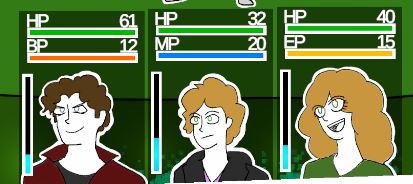
Health points act as you'd expect, when they are attacked, their health is lowered. If it reaches zero, they are incapacitated and will need healing to re-join the battle. The battle is lost for the player if all party members are slain.
The resource bar is unique to each character. More powerful actions require the use of this resource, which can only be replenished through certain actions respective to each characters role within the battle.
The action bar dictates when a character is allowed to act. This bar depends on the character's speed ability, but can be influenced with other party members abilities.
Behind each character is an 'aura' which displays the current emotional state of the character. Depending on the current state of battle, their spirits can be elevated or lowered which brings advantages and disadvantages.
Abilities:
Each character starts battle with a set of moves, which appear on the palette to be selected when it is their turn. Below, I have compiled each party member's list of basic abilities.
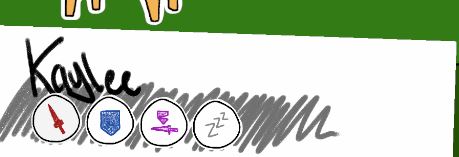
From left to right:
1. Attack - Deals the character's attack stat as damage against a single opponent, no cooldown
2. Defend - Increase defence until next action, no cooldown
3. Break Armour - Lower an enemies defence and deal low damage, 2 turn cooldown
4. Rest - Do not act this turn.

From left to right:
1. Attack - Same as before, deal attack stat against one enemy
2. Blaze - inflict fire damage over time, 3 turn cooldown
3. Heal - Replenish the party's health slightly
4. Haste - Grant faster action bar recharge, allowing for faster turns
5. Rest - Do not act this turn.

From left to right:
1. Attack - Same as before
2. Defend - Increase defence until next action
3. Taunt - Cause enemies to target the user
4. Rest- Do not act.
Below are the characters performing their 'Attack' skill against enemies:
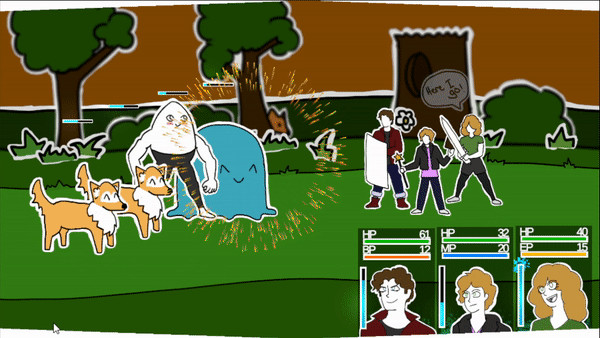
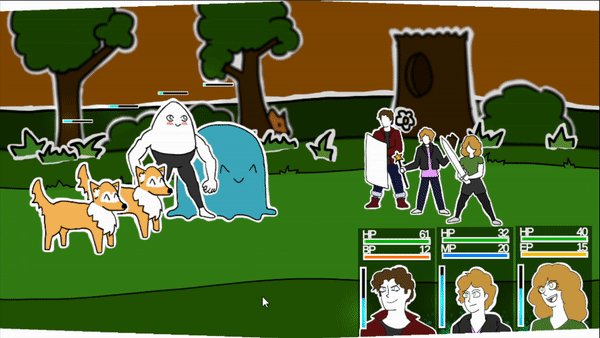
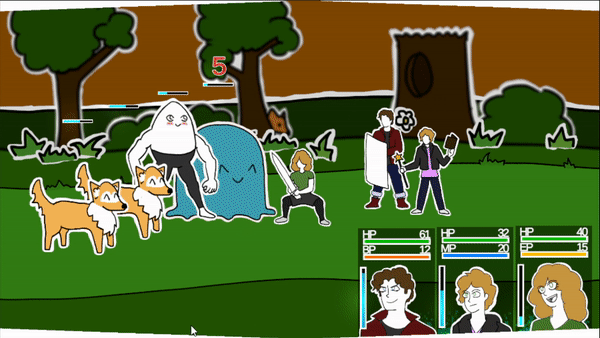
This Devlog is attached to a very basic proof-of-concept for the game, feel free to try it out and get a basic feel for my vision!
I am also hard at work designing an overworld, in the meantime here is some other concept art I did at the very start to help form my vision.
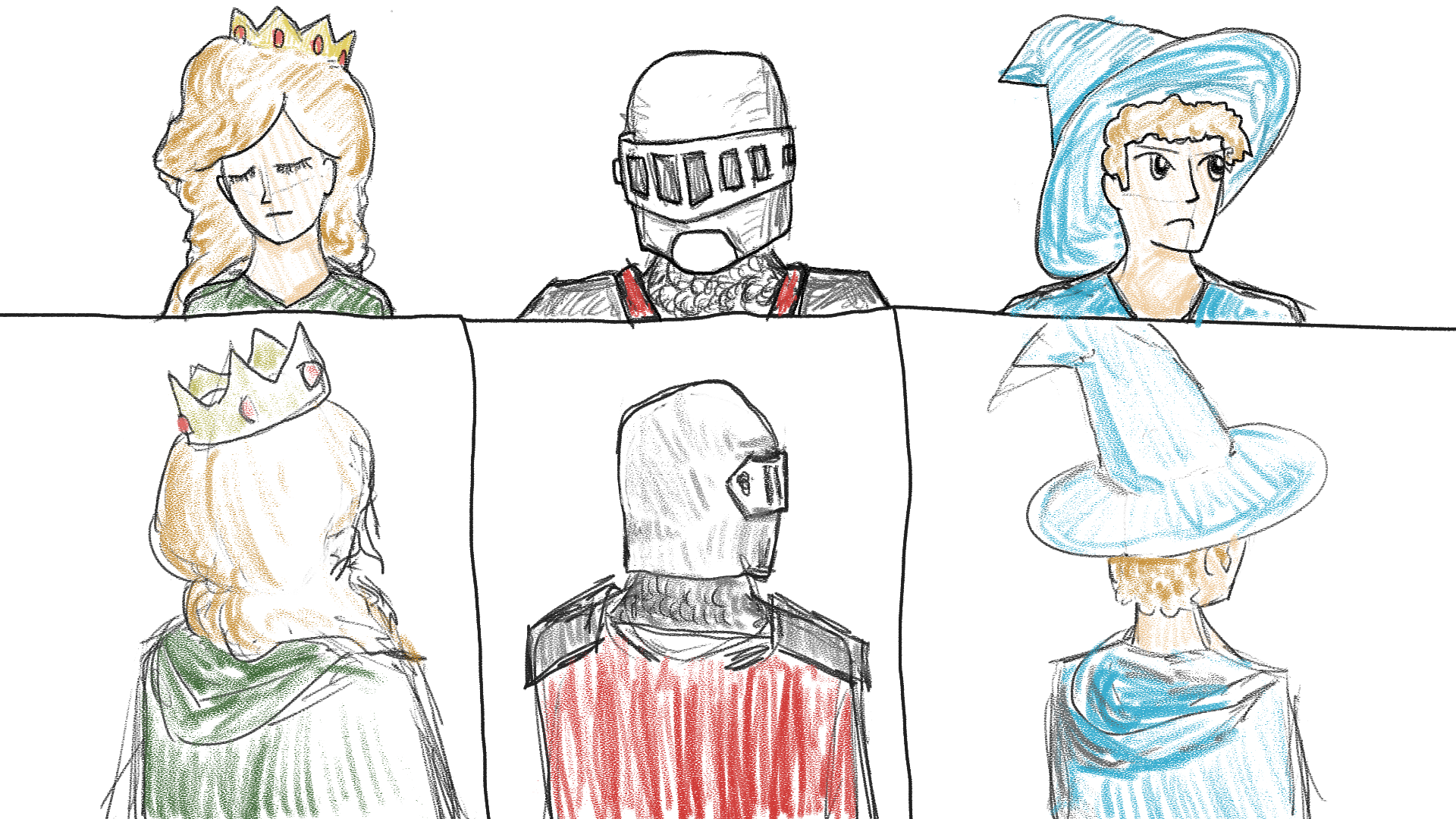
My first pass at trying to make characters for the game, where the player camera would sit behind the party. Scrapped because I wasn't happy with the art style.
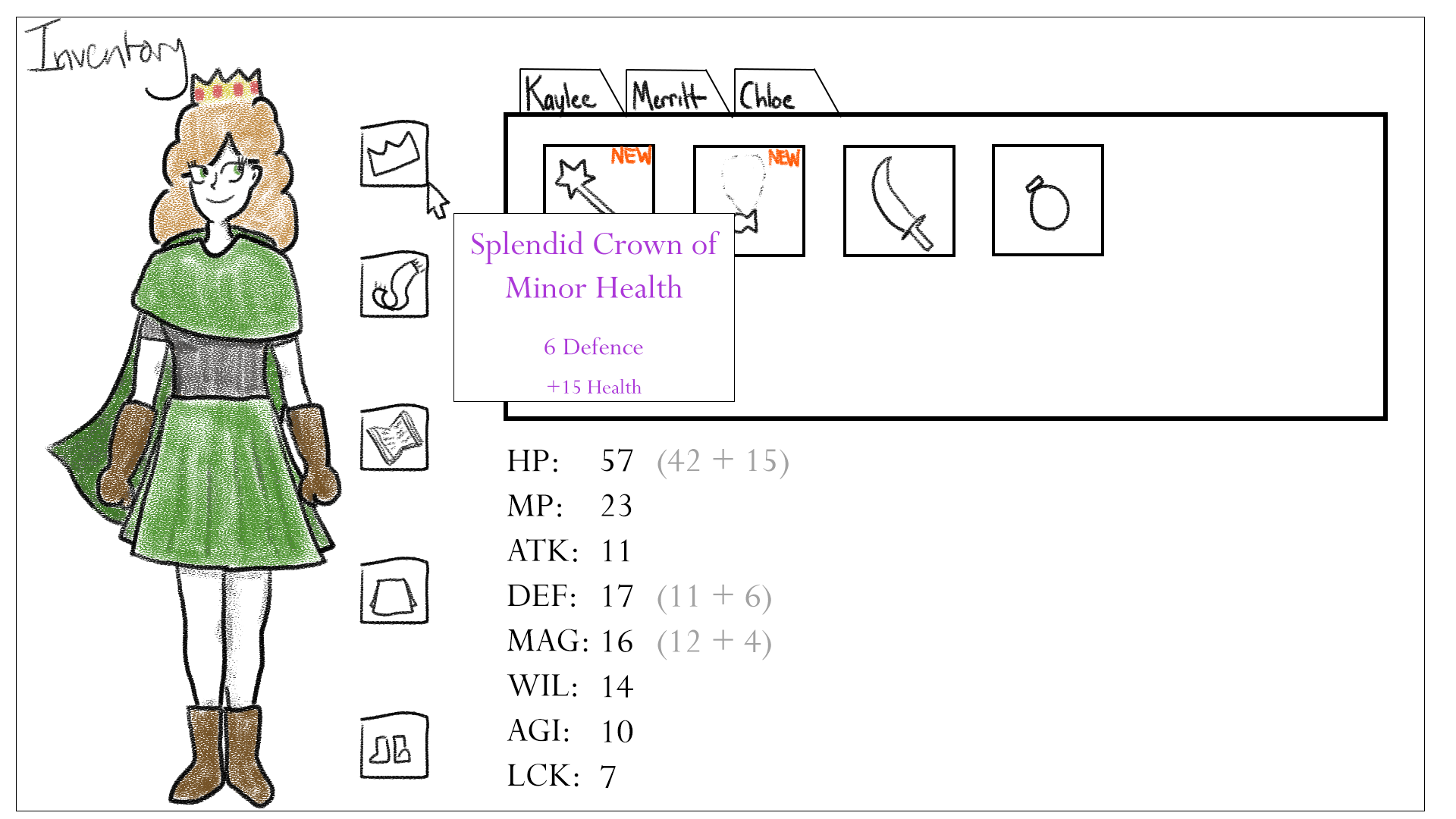
A mock-up of an inventory screen, I haven't done any more work to consolidate the form, just needed a placeholder to help understand what I needed to code.
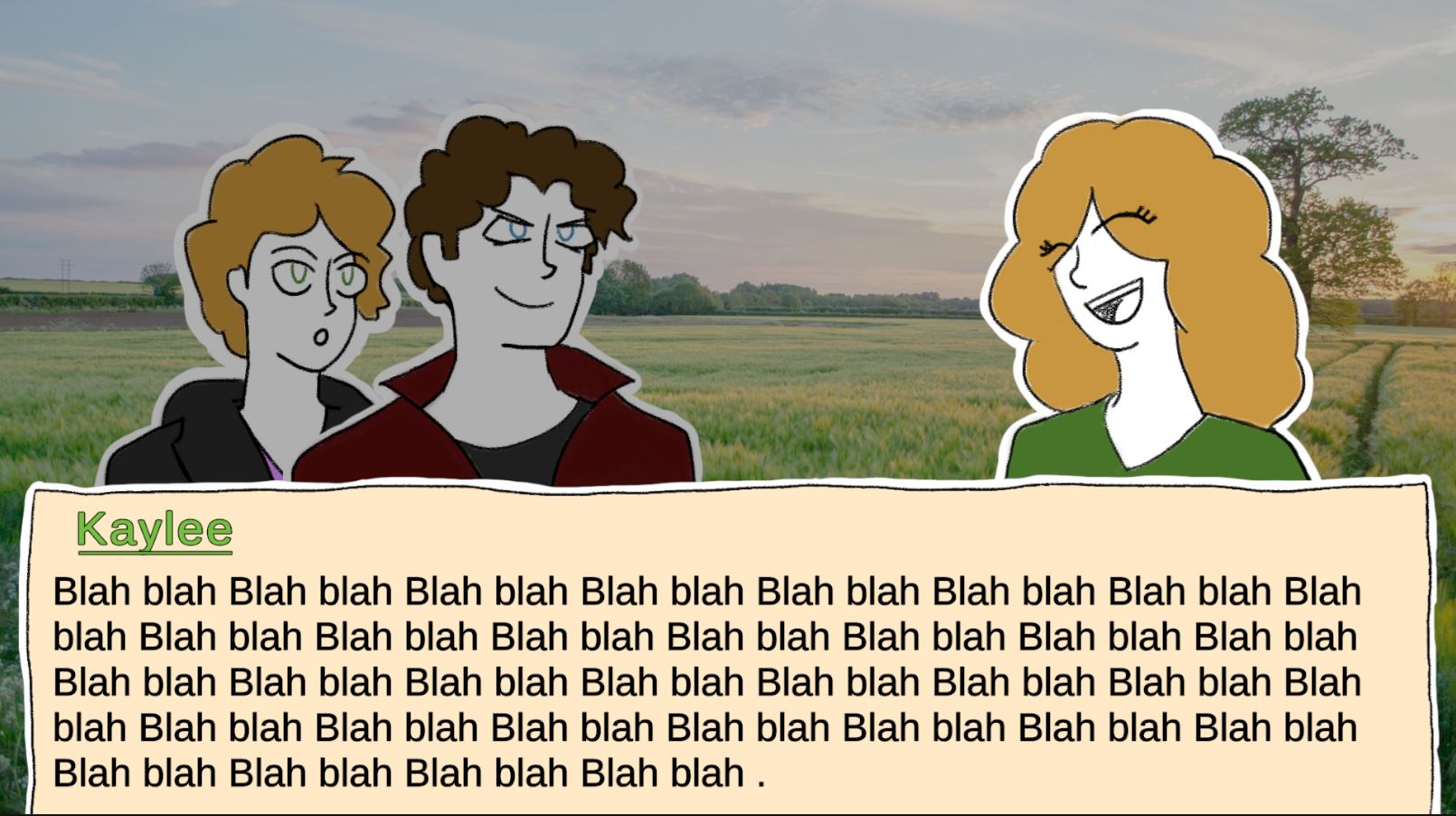
A mock-up of a conversation between the party members. Characters actively speaking are brighter, while the other members are greyed out. Their expression will change based on the mood of the text message.
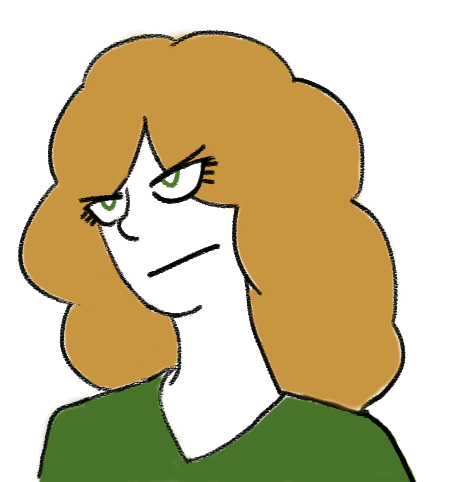
All of Kaylee's current expressions
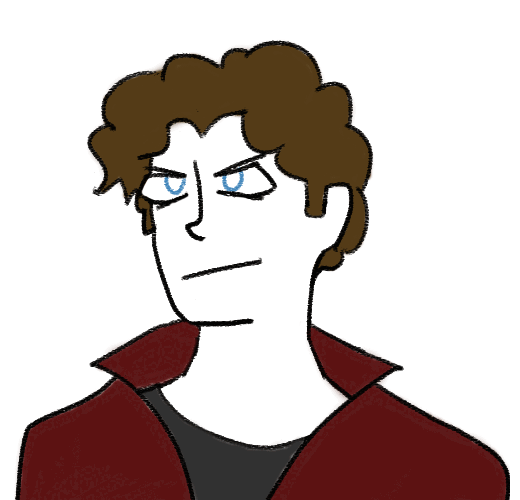
All of Andrew's expressions
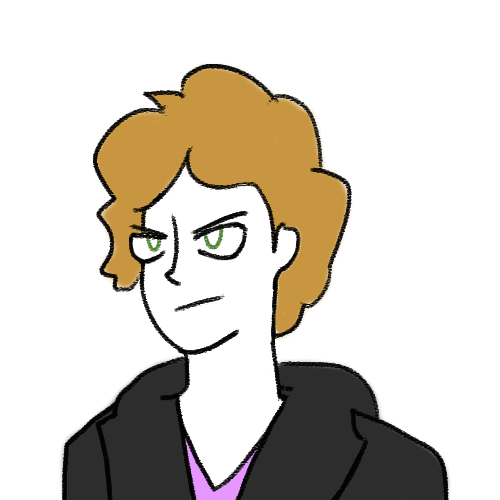
All of Jet's current facial expressions.
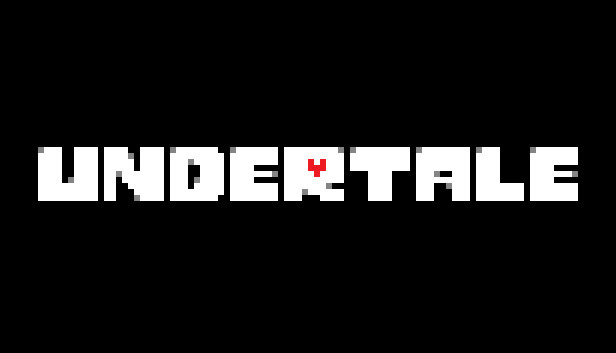
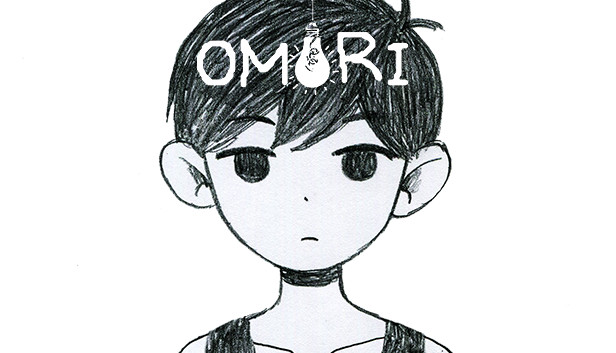
Leave a comment
Log in with itch.io to leave a comment.